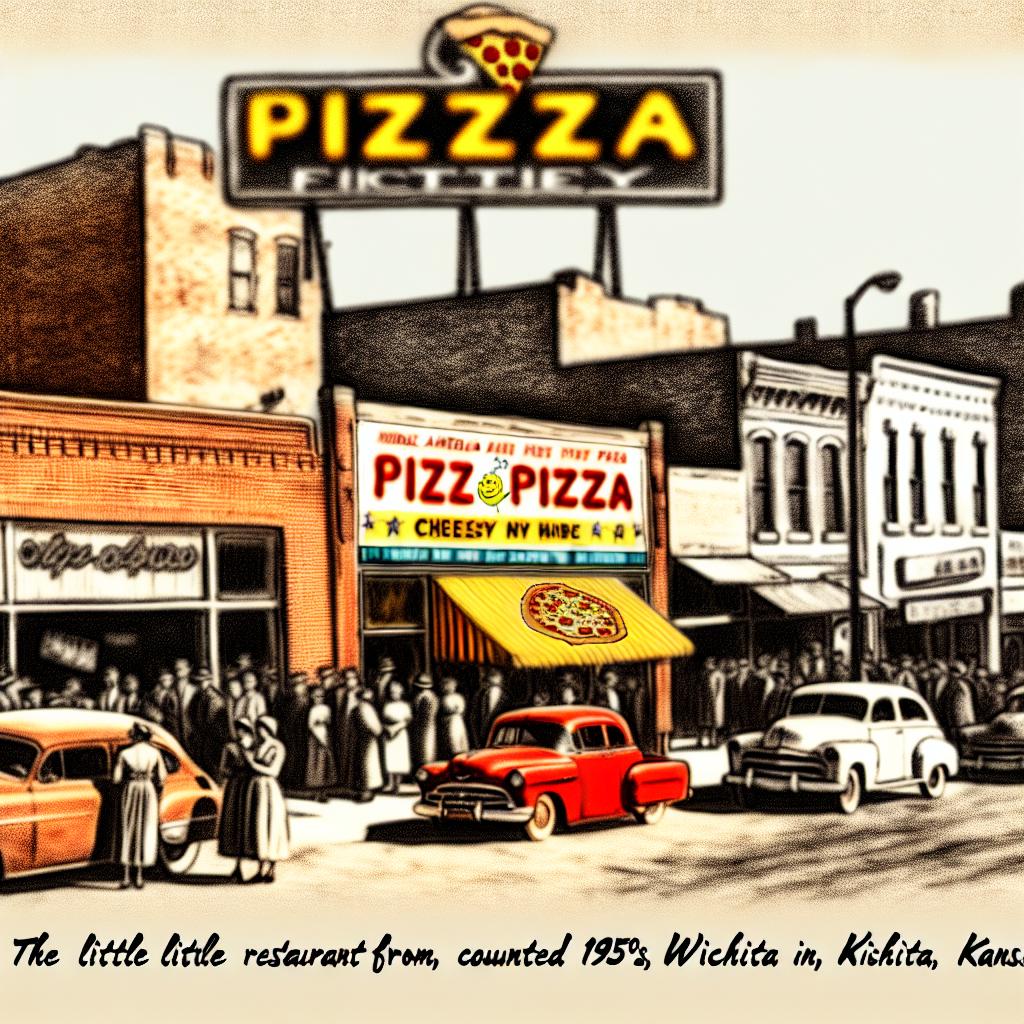Early Beginnings in Wichita
Pizza Hut, a major player in the global pizza sector, has humble beginnings that date back to Wichita, Kansas. The story begins in 1958 when two brothers, Dan and Frank Carney, embarked on a business venture that would transform the landscape of fast-food dining. Their journey started with a modest sum of $600, which they borrowed from their mother. With this, they rented a small building and bought second-hand equipment, making an initial investment that laid the foundation for what would become a household name around the world.
The First Location and Expansion
The inaugural Pizza Hut restaurant sprang up at 503 South Bluff St. in Wichita. The name “Pizza Hut” was derived from the building’s unusual hut-like architecture and the constraint of limited sign space, which could only accommodate eight letters. By the end of their first year, the Carney brothers had successfully launched six more restaurants in Wichita, setting a remarkable benchmark for rapid growth.
Innovative Marketing and Menu
The early success of Pizza Hut was largely due to its pioneering marketing approaches and a menu that prioritized quality and customer satisfaction. The Carney brothers focused on crafting a family-friendly atmosphere where patrons could savor pizzas in a welcoming setting. Their strategy underscored a commitment to upholding high standards, a principle that connected with their clientele and significantly contributed to their expansion.
Franchising and Nationwide Recognition
Seeing the potential for greater development, Pizza Hut began franchising in 1959. This decision to embrace franchising rapidly fueled their growth across the United States. By the 1960s, Pizza Hut had established a strong presence in the pizza industry, boasting numerous locations nationwide. The brand’s distinctive red roof became an iconic symbol representing quality and consistency in service. This color choice also helped in cementing the brand identity, making Pizza Hut immediately recognizable to customers and passers-by alike.
Moreover, Pizza Hut’s strategic placement of outlets contributed significantly to their national recognition. Targeting high-traffic areas, they ensured that their brand was visible and accessible to a wide array of customers, further solidifying their dominance in the market.
International Expansion
The remarkable journey from a single establishment in Wichita to a global powerhouse continued as Pizza Hut expanded into international markets in the late 1960s and early 1970s. The brand’s strategy for international expansion was predicated on adapting its offerings to suit local tastes, while still maintaining the core values that had proven successful in the U.S. This approach of blending local culinary preferences with their traditional menu offerings allowed Pizza Hut to resonate with international customers and establish a significant foothold in the global fast-food industry.
Pizza Hut’s venture into diverse markets also involved strategic partnerships, helping them to navigate different cultural and economic landscapes effectively. By integrating local insights into their operations, they were able to offer a unique dining experience that felt both familiar and novel to international patrons.
Pioneering Innovations
Pizza Hut has carved a niche for itself as an innovator in the pizza industry, constantly pushing the envelope with its offerings. A significant milestone was the introduction of the iconic “pan pizza” in 1980, a product that stood out for its crispy crust and flavorful toppings. This innovation appealed to a wide audience and quickly became a staple on their menu.
Additionally, Pizza Hut has continually experimented with new pizza varieties and concepts, including stuffed crust, hand-tossed, and thin-crust pizzas. Their willingness to embrace culinary innovation has allowed them to cater to evolving consumer preferences, such as the increasing demand for healthier and more diverse menu options. Pizza Hut’s proactive approach to menu development ensures that it remains competitive in the fast-paced fast-food industry.
Moreover, it wasn’t just the pizzas that underwent innovation. Pizza Hut also leveraged technology to improve the dining experience, launching online ordering systems that streamlined the process for customers. This foresight in embracing digital advancements has played a crucial role in maintaining their relevance in today’s technologically oriented world.
The Legacy of Pizza Hut
The journey of Pizza Hut from its modest beginnings in Wichita to its current status as a global leader serves as a powerful testament to the vision and perseverance of its founders. The Carney brothers’ dedication to quality, customer satisfaction, and continuous innovation set a rich legacy that continues to guide the company today.
Such a legacy is evident in Pizza Hut’s commitment to corporate social responsibility. Through various philanthropic efforts and sustainability initiatives, the company strives to give back to the community and reduce its environmental impact. These efforts reflect the enduring values instilled by the Carney brothers, highlighting a commitment to being a responsible corporate citizen.
For those interested in learning more about Pizza Hut and its transformative impact on the food industry, exploring additional resources can provide deeper insights into the strategies and decisions that have driven its remarkable evolution. Many platforms offer a wealth of information for those curious about the inner workings and historical milestones of this iconic brand.
This enduring legacy of innovation, combined with a consistent focus on customer satisfaction, ensures that Pizza Hut continues to be a prominent figure in the global fast-food landscape, inspiring future generations of entrepreneurs and setting benchmarks in the industry.

